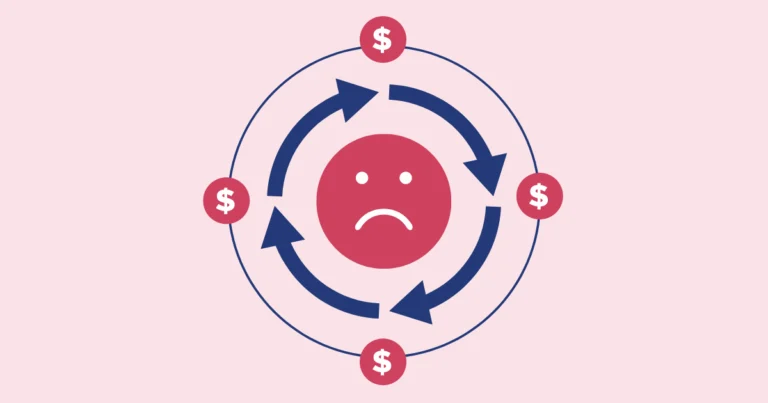Every company needs to grow and adapt if it is to survive and prosper. As you grow, it is imperative to scale your support operations as well, to continue offering exceptional service to your customer base. However, scaling up your customer support does not come without challenges. In this article, we’ll look at the best ways to scale customer support to meet the ever-evolving demands of your customers and stay ahead of the competition.
Why Do I Need to Scale Customer Support, Anyway?
Even if your customer service team is running like a well-oiled machine, you simply can’t rest on your laurels because change is inevitable in business.
Companies face many challenges that require them to scale customer support. The most common include:
Meeting Customers’ Expectations More Effectively
Scaling isn’t just about putting more staff on the call center floor. It, also, means delivering better experiences to your current client base. It’s about providing customers with the service they crave.
67% of US customers state that customer service is very important in their choice of brand. Intelligently scaling up your support results in better customer satisfaction, more repeat business, and an increase in retention.
Better customer satisfaction also has a knock-on effect on agent satisfaction, with every 1% improvement in first-call resolution causing a 1-5% increase in employee satisfaction. This, in turn, reduces the cost of employee churn.
Offering More Support Channels
Microsoft’s Global State of Multichannel Customer Service Report found that customers are increasingly using multiple channels for support. The average US and UK consumer now uses four types of support channels. The most popular ones for US customers are:
- Telephone (81%)
- Email (78%)
- Live Chat (65%)
- Online Support Portal (62%)
- Search Engine (51%)
Offering more support channels for customers increases customer satisfaction scores and can result in lower contact volumes because customers find their answers through self-service means.
Gaining More Customers
Of course, another big reason you’ll need to scale up your customer service is when you experience a growth in the number of customers you serve.
As a company gains more customers, it must expect there to be more demand for support. Few companies succeed without that drive for growth, so every organization must strive for a customer service system that can grow and adapt as the customer base increases in size and variety.
Similarly, your company might decide to encourage more conversations with customers, such as offering VIP support or better service to free customers. This can have a rapid effect on how many support queries you receive and the time you need to resolve them.
Adding New Products or Services
Adding new products or services to your lineup puts additional strain on service channels, a strain that needs to be eased by scaling support to meet the new demands.
New products and services often have teething issues and customers are more likely to need support during these initial days. Manuals, FAQs, and knowledge bases are yet to be fleshed out and often must be written on the fly. New procedures can be disruptive. Agent training on new products and services takes time, often with reps away from the helpdesk for several hours or even days.
Pre-emptively scaling your customer service while building agile processes and versatile teams can limit the disruption this can have.
Expanding into New Locations and Time Zones
Opening your service into new areas means adding new challenges, too. There can be differences in how products and services must be provisioned in each region. Additionally, dealing with customers internationally can add cultural differences into the mix.
And with customers operating in multiple time zones, your peak hours will become longer, stretching your customer service teams to their limits. Additional team members will be required to handle the extra hours, which also means more complex shift management.
11 Strategies to Help you Scale Customer Support
Scaling customer support requires an ongoing, all-encompassing plan that considers everything your customer service currently offers, as well as what you hope to supply in the future. Here are the best strategies to ensure success at your scaling efforts.
Analytics, Analytics, Analytics
When the time comes to scale customer support, the first thing you need to do is take a closer look at your customer service data. The metrics and KPIs you are tracking and measuring overtime will give you a well rounded understanding of the state of your daily operations and will also help you predict future support needs. The main reason behind this exercise is to gain data-based insights to help you decide which steps to take towards successfully scaling your support operations.
If, for example, your agents are receiving low satisfaction scores and you need to scale operations, instead of adding new members to your team you should consider first training you current employees to improve their skill set in the areas they are lacking. Or, if your data shows that your help center is flooded by customer queries about the same issues, the best course of action when it comes to improving performance and scaling is to create a knowledge base.
Furthermore, while scaling your operations you have to continuously track KPIs to make sure the steps you have taken are in the right direction. When your KPIs do not evolve the way you would expect them to, then you have a very clear indication that something went wrong and you need to revaluate your plan of action.
Another thing to keep in mind is the definition of support analytics in a scaling customer service team:
Evolving Analytics
As the number of support channels you offer increases, you may need to think of good service in different terms. Before, it may have been how quickly your team could answer calls on average and how often they resolved queries on the first contact. Now, you might need to consider how many emails have been replied to within three hours or how many community forum posts have been resolved over 24 hours.
Choosing Analytics
When building metrics to analyze, carefully consider how each will affect your team and the customer experience. You could push for a 5-minute response time, for instance, but if it’s a considerable struggle for your team with minimal customer satisfaction gains over a 60-minute response time, you must decide whether it’s really worth it.
Ultimately, everything else you do to scale customer service rests on getting the right data, so focusing on great analytics should be a priority.
Develop Efficient Onboarding
Onboarding is an important consideration for customers and customer service representatives alike. Onboarding is recognizing in advance the challenges someone might have when they’re first becoming acquainted with your products and services and offering guidance even before they decide to reach out to you.
Customer onboarding is an important part of experience management, the systematic process of managing every interaction your business has with a customer. Customer onboarding could include steps such as automated emails, in-app tutorials, or phone calls triggered when customers reach certain key stages.
Onboarding similarly works for your new customer service representatives. They too need to get to grips with all the processes, procedures, and intricate details of all your products and services, and the faster you can get them up to speed, the better. Good agent onboarding also makes reps feel better supported and confident that they can do their job, ultimately resulting in better teams and reduced staff turnaround.
Invest in Helpdesk Software
At the heart of your customer service is the helpdesk software you use. Good helpdesk software gives your team the tools they need to get the job done effectively. Bad helpdesk software just gets in the way.
When evaluating support software that can help your customer service scale, consider these priorities:
- An intuitive interface that’s easy to understand for agents
- Delivers an excellent customer experience that makes the customer feel cared about
- Secure, with role-based permissions
- HIPAA- and GDPR-compliant depending on your requirements
- Offers workflows for automating repetitive tasks
- Can scale when your needs grow
- Supports all the support channels you use in a single system
- Can integrate with third-party software you use
- Supports collaboration between your agents
- Offers excellent reporting and metrics
Implement Skills-Based Ticket Routing
Contact center software with support for skills-based routing can help you make the most of your team’s experience and knowledge. With skills-based routing, each agent is assigned one or more skills they’re competent in handling. When a new ticket comes in, it is automatically assigned to an agent who is flagged as being able to handle this query quickly and competently.
Skills-based routing is remarkably effective in optimizing contact distribution and lowering waiting times and customer frustration. Intelligent skills-based routing increases customer satisfaction, increases first-call resolution, improves agent performance, and even increases agent engagement, as they can more confidently handle all queries sent their way.
Skills-based ticket routing is an excellent way to improve CSAT with no additional outlay.
Embrace Automation
The contact center is full of menial tasks that require little human brainpower but sap agents’ time. Automating these tasks through the smart use of technology will free up your agents to do what they do best—support customers with a human touch.
Some ways you can enable automation include:
- Automated emails advising customers on the current status of their queries. This reduces the number of responses agents need to make to people checking up on how their support ticket is progressing.
- Customer satisfaction surveys can be almost completely automated with intelligent software, freeing up agent time and offering you outstanding feedback on every element of your customer support.
- Organized support queues can ensure problems are sent to the right people the first time, so agents don’t have to waste time redirecting queries. Automation can be used to organize, prioritize, redirect, and escalate queries.
- Saved replies offer agents a fast way to quickly reply to common queries without having to type out the response again. Ultimately, these saved replies can be better written and include more useful information than a response hurriedly typed out by an agent.
Get Busy with Artificial Intelligence
AI in customer service can offer intelligent automation options and help reduce the number of support queries your contact center receives. Some AI applications iclude:
- Chatbots offer a way for customers to ask simple queries or make changes to their accounts without the intervention of a human.
- Natural language processing can be used to automatically examine the speech interactions of customers, revealing trends and themes.
- Sentiment analysis can automatically gather data from customer feedback and speech analysis to offer important insights into how customers feel about each element of the business.

Looking for a complete guide on the applications of AI in customer service?
Offer Self-Service Options
Self-service support options are a win-win solution for customers and companies. After all, studies show that 75% of customers use search engines to find answers to customer service questions.
Many people prefer to solve their issues without contacting the company, so adding high-quality self-service options improves the customer experience. It can also drastically reduce the number of calls, emails, and social media messages your support staff needs to deal with.
These are some of the most popular self-service channels:
FAQ Hubs
Every contact center experiences a situation where different customers seem to contact the company about the same queries. Take these common queries, and add them to an FAQ hub on your company website or support portal. Add well-written, thorough replies to the query, and make it possible for customers to easily search the hub for the queries they have.
An FAQ hub serves as an excellent first line of response for many customers. 92% of US and UK customers state they expect a company to have a self-service FAQ page. They will use an FAQ hub instead of calling customer support if it’s available.
FAQ hubs are also great for agent training, as they represent the correct company-endorsed replies agents should make to each type of query. They can make dealing with customer issues a lot faster, as the agent only needs to direct the customer to the FAQ instead of typing out a whole new reply each time.
Knowledge Bases
Knowledge bases are closely related to FAQ hubs but serve slightly different purposes.
An FAQ hub is mainly aimed at potential customers with straightforward questions, clarifying the basics of your products and services in a mostly text-based format.
A knowledge base is a more general source of user documentation better aimed at regular or long-term customers. Knowledge base tools often include a digital archive of text answers, videos, glossaries, and manuals.
A knowledge base is much more likely to go in-depth on topics and offer longer, step-by-step guides to getting the most out of products and services. They’re important, as 63% of Americans state their primary gripe with self-service support is a lack of in-depth information.
Again, knowledge bases are useful tools for self-service customers while also being superb for the ongoing training of agents. With a well-stocked knowledge base that’s easy to search, both customers and agents have a fantastic tool for resolving issues, lowering the time that needs to be spent discussing them over the phone.
User Communities
A user community is another fantastic way to take the pressure off your contact center team. User communities offer an opportunity for customers to discuss your products and services with other like-minded people. They can find answers to common queries and learn more ways to get the most out of your offerings.
User communities can build trust and authority in your brand, as they prove so many people are willing and interested to use your solutions. They can build ambassadors for your brand, people who are essentially willing to perform customer service on your behalf because they enjoy it.
User communities must be adequately moderated, though, with clear guidelines on what can be discussed. Your team should be involved in the ongoing management of the community, so you can continue to drive conversations in a positive manner while getting valuable feedback on how to improve your services.
Improve Standard Operating Processes (SOPs)
Your standard operating processes (SOPs) must evolve as your business grows and changes. There are several crucial points in your SOPs that should be examined whenever you expect the need to scale customer support:
- Auto replies—Automatic responses to queries by email or ticketing offer an additional level of confidence as your business grows. Auto replies allow you to set realistic expectations and even supply potential self-help options to customers.
- Redesign your contact points—Where do customers first look for help with your products and services? As you add alternative channels for support and self-service options, ensure these landing pages are directing people to the information they need in as conveniently as possible.
- Add ways to share best practices—Agents will come up with innovative and unique ways to solve problems and reduce workloads. Make it easier for them to share these practices with you and others so you can implement them across the team.
- Simplify procedures—Your analytics should show you the types of queries you’re receiving that are taking longer to resolve. Use this information to find ways to simplify the procedures involved.
- Crisis plan—A scaling company will hit times when the pressure on customer service is too strong. Have a plan ready for what to do to minimize the harm such times have on ongoing support so you avoid cascading delays.
Create a Sustainable Team Structure
Scaling a poorly structured customer service team is very challenging. In order to be successful you must ensure that your team can adapt to the new challenges and realities scaling brings with it. Inflexible and rigid team structures will resist the necessary changes required to deliver effective support at a larger scale and all your efforts will be in vain.
To avoid this problem you must ensure a sustainable team structure which makes it possible to:
- easily add new members
- swap around roles
- assign different duties/tasks
- track performance and quality

Want to know how to determine the right structure for your customer service team?
Empower Your Team to Act Autonomously
When there is a need to scale customer support, the tendency is to hire additional staff or even employing a whole new team to handle the support of new lines of business. Before doing so, it pays to ensure you’re getting the best performance from your existing teams.
Instead of throwing new bodies at the problem, make the most of your more experienced employees by allowing them to act more autonomously. Look for ways to cut out the red tape in your current processes while keeping new agents aware of the limitations of your services. You can achieve this by
- Offering ongoing feedback and training
- Establishing clear communication channels
- Providing team members with the tools they need to perform at their best
- Allowing agents decision making power
- Trusting your employees with new tasks
Consider Outsourcing
Outsourcing some or all your contact center requirements can be an effective way to scale when the demands of your clients outstrip your ability to provide excellent support alone.
Internal contact centers are expensive to run and manage. You must constantly recruit, hire, and train new staff while also worrying about infrastructure and technology costs. If your business is poorly equipped for this challenge, outsourcing to a large, experienced support center company could result in better service for your customers while costing you less.
But there are also potential pitfalls to consider. Outsourced contact centers rarely specialize in specific industries, leading to gaps in knowledge. Even industry-specific contact centers don’t have intricate knowledge of how your company is run, its products and procedures, so additional training is required. If customers can detect support operations have been outsourced as a cost-saving measure, it can reflect poorly on your company.
Outsourcing is therefore a potentially powerful card to play but it must be implemented with care and the effects on customer satisfaction should be closely monitored.
Conclusion
Scaling customer support is inevitably a requirement for any growing business. You must continually improve your service offering to better meet customer expectations while supporting more products, locations, time zones, and an increasing number of customers, just to remain competitive.
Smart scaling begins by ensuring you have adequate tools for monitoring and analyzing the performance indicators driving your customer service. You can reduce the pressure on your existing resources by offering self-service options, developing better onboarding resources, and embracing the use of good AI tools.
Within your contact center, empower your customer service representatives by investing in state-of-the-art helpdesk software, skills-based ticket routing, and building the best processes that give them the autonomy to perform their job.
Did you like the post?
You might also like:

Surveypal
Everything you need to lead and improve your customer experience. Learn more at surveypal.com, or







